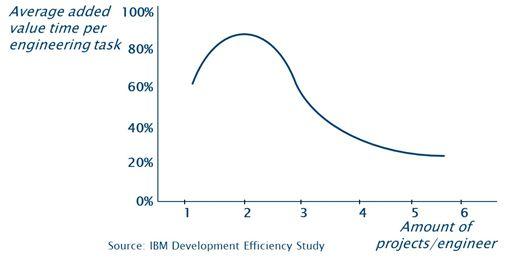Belgium is the fourth most productive country in the world, but our productivity growth has been sputtering. In this series we present five practical tips to boost productivity in the office and on the shop floor.
In the first part of the series we discussed the productivity of Belgian companies. Recent economic growth is largely due to the increase in the employment rate and no longer due to innovation-driven productivity growth. This is problematic in the long run. The pool of available manpower is finite, which threatens to stall economic growth in the foreseeable future. This is no longer a theoretical finding. Many companies are already struggling to grow because they cannot find suitable workforce.
In order to support Belgian companies with their productivity improvements, we collected a number of tips that we will publish at regular intervals. These tips are deliberately not aimed at implementing advanced technologies, but on improvements that can be achieved with little effort.
Tip 21: Stop the annual stock count and start cycle counting
(Source picture: Pexels)
Unforeseen stock shortages are the source of many production losses. Better stock management can solve many problems.
Many companies limit stock control to an annual stock count. This allows small stock errors to accumulate over a period of one year, which increases the risk of stock shortages. In addition, the annual stock-taking itself often leads to productivity losses. Production is partly halted for the purpose of counting, while large part of the staff is also required to take part.
An alternative to an annual stock count is ‘cycle counting’, which means that you frequently (e.g. daily) count a small part of the stock. Because only a very small part of the stock is counted on a daily basis, the production is not disturbed, and the counting can easily be done by the warehouse operators. Cycle counting makes it possible to measure stock accuracy more frequently and to monitor it better. Display the accuracy figures in the warehouse and discuss them with the employees. Then look for the causes of the errors and take the appropriate measures.
By switching to cycle counting you can and may also drop the annual count. Many ERP systems also offer the necessary support for cycle counting.
Tip 22: Overcome breaks
(Source picture: Pexels)
The output of a production company is ultimately determined by the bottlenecks. If you want to increase the output, you should focus primarily on the bottleneck machines and workstations.
Is an (expensive) machine a bottleneck in your production? Then organise the breaks in such a way that the break times are overcome.
By letting some employees take their break earlier or later and letting them come back earlier or later, staff can always be present to operate the machine. Cross-training between employees (see tip 7) is often important to make this possible. The impact of overcoming the breaks should not be underestimated. Depending on the duration of the breaks, you can quickly produce about 10 percent more.
Tip 23: Let others do the work
By doing less work yourself and transferring tasks to third parties, you become more productive. You can even easily transfer several of these ‘smaller’ tasks free of charge. A few examples:
- Do you have a reception desk with a receptionist to welcome and register visitors? You can easily leave this task to the visitors themselves. More and more companies are opting to provide a computer with a registration system and a printer so that visitors can register themselves. A simple telephone list at the entrance is often a good solution.
- Does your customer service get a lot of questions? By placing a FAQ on your website and providing clear manuals, customers can often find the answers to their questions there.
- You can also often leave simple assembly activities to your customer if you provide good instructions.
With a bit of creativity, you can go pretty far in this. Recently, patients at the emergency ward of the UZ Gent can examine themselves at a self-measurement kiosk.
Tip 24: Limit the number of projects per employee
(Bron foto: Unsplash)
The productivity of project staff (design office, engineers, product developers) depends very much on the number of projects they work on simultaneously. The optimal number of projects per employee is typically two large projects or three smaller projects. We often see that employees are working on more projects, which means that they have to constantly switch between project tasks. These shifts involve a lot of ‘switch losses’ because it takes some time before you are again fully into the other project. The figure below shows the results of a productivity study carried out by IBM and the dramatic drop in productivity for a high number of projects. Working on one project turned out not to be optimal either, because the employees often had nothing to do, because they were waiting for information. In these cases, it can be useful if you can switch to another project.
Tip 25: Sort ferrous materials and double the income
Many companies treat their waste streams rather carelessly. Waste often has value, and by handling it well, you can even tap into a new revenue stream, which is a lucrative way of increasing your productivity.
The purity of scrap strongly determines its value. Collectors offer higher prices for pure materials than for mixed flows. This also applies to ferrous metals. By offering different metals and alloys separately instead of mixed, the value of certain fractions can double. Roughly speaking, the price differences between the various metals you purchase also apply to the waste flows.
Curious about what your scrap metal is worth? You can follow the price evolution of secondary raw materials on several websites, such as De Tijd and Let's Recycle. More tips on waste management can be found on the website Cirkeltips.
Do you have any tips? Let us know so that we can share them and become more productive together!
Click here for an overview of the other parts in the series.





